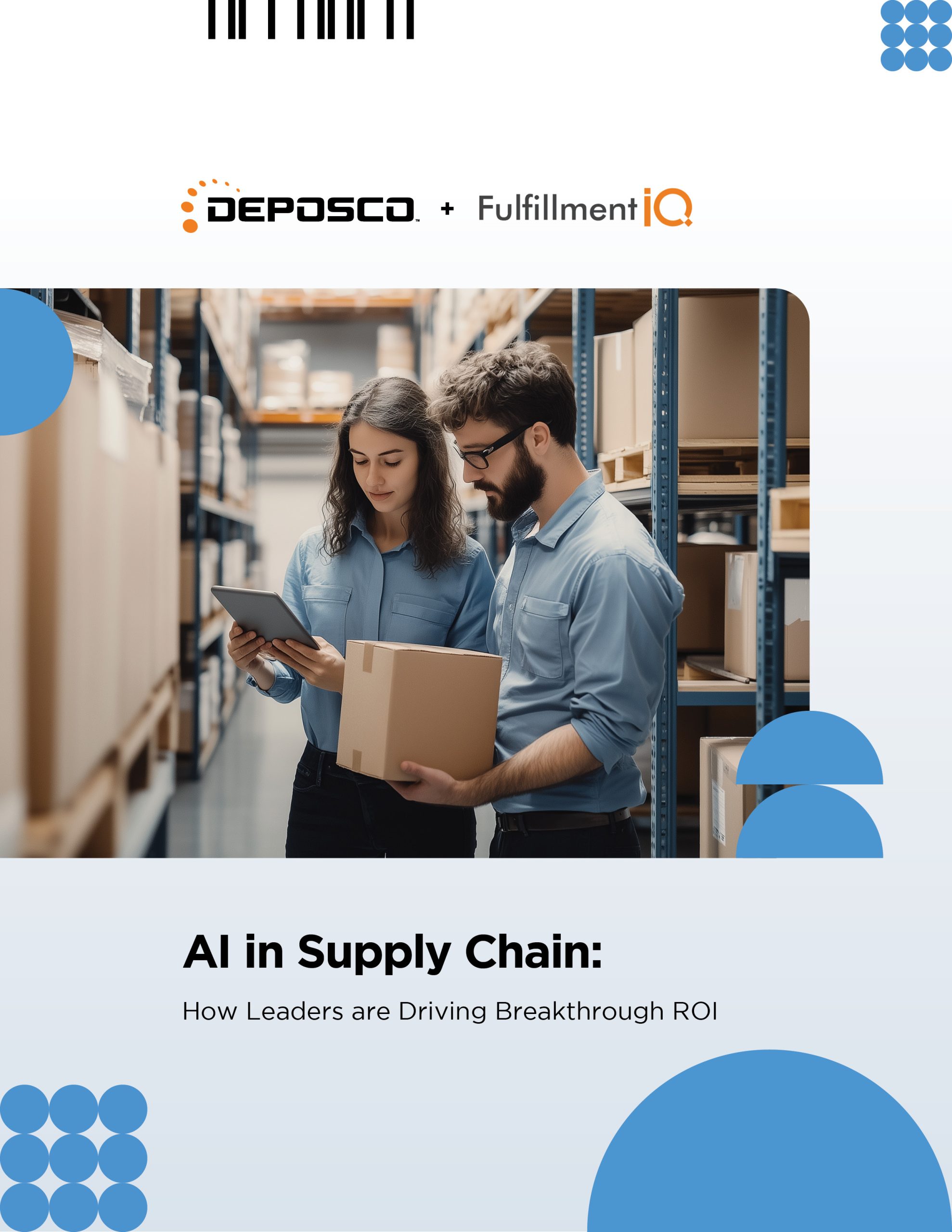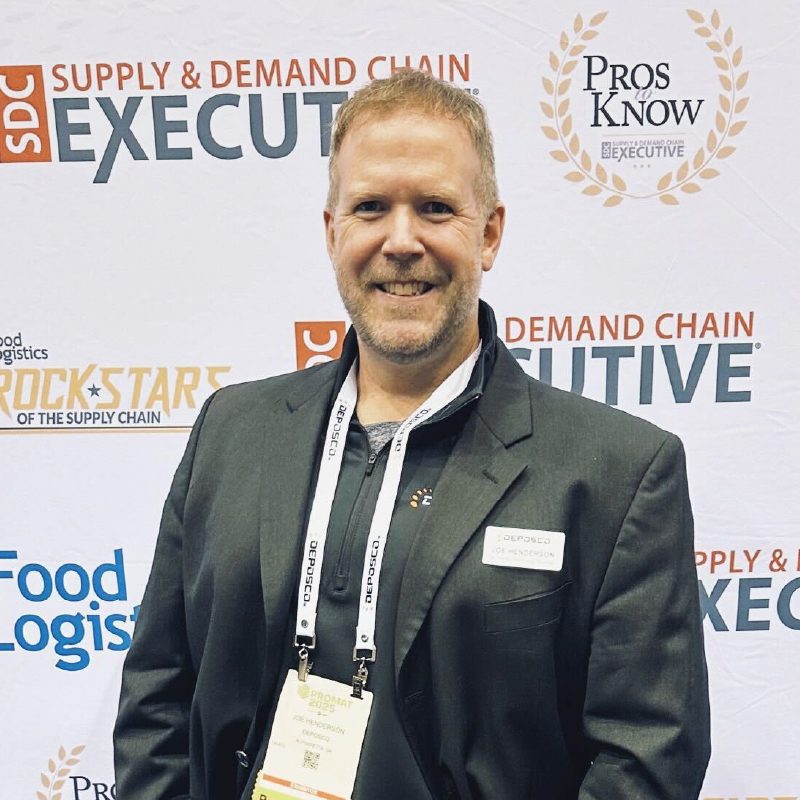Let’s be real about ProMat 2025: behind the flashy robots and AI buzzwords, the industry is having a moment of real, breakthrough value with AI in the supply chain. After spending a week in Chicago taking in hundreds of booths, sessions, and conversations, I’ve cut through the noise to identify what’s actually happening versus what’s just marketing hype.
Getting back to basics isn’t optional anymore
The south wing this year was dominated by traditional warehouse technology – racking, forklifts, structural improvements, and – of course – warehouse management systems. This wasn’t coincidence or nostalgia. After years of throwing technology at problems, companies are finally realizing that without solid fundamentals, your fancy AI is just expensive window dressing.
How are leaders driving breakthrough ROI with AI solutions? Our report with Fulfillment IQ has the latest insights and strategies.

After failed implementations with other vendors, prospects have been coming to us hammering this point: get the basics right first, or fail spectacularly later. This is exactly why we’ve always focused on building a flexible foundation at Deposco – one that adapts to whatever the market throws at you while ensuring your core WMS and OMS capabilities are rock-solid.
The truth? You can’t automate dysfunction away. Period. You just get streamlined inefficiency.
Robotics: the reality check is here
The robots were certainly impressive in the north hall, but something’s changed. Instead of breakthrough innovation, vendors are refining existing MHE models – a clear sign that we’re moving past the hype cycle into practical implementation and proven use cases.
I counted four major firms with nearly identical ASRS systems. Four! The differentiation is disappearing, which means two things:
- The technology is maturing
- The winners will be determined by who can deliver reliability and ROI, not who has the coolest demo
This is precisely why we announced Deposco’s expanded MHE integrations at ProMat – not because robots are sexy, but because our customers need pragmatic pathways to supply chain automation that work with their existing systems rather than replacing them.
AI: show me the money or stop talking
If I had a dollar for every booth two years ago that claimed to have “AI-powered solutions,” I could retire tomorrow. But here’s what’s new: people are finally demanding proof.
The days of AI for AI’s sake are officially over
Nearly every conversation I had included pointed questions about AI capabilities: “What specific problems does it solve?” “Show me the actual ROI.” “How does it work with my existing systems?” This evolution aligns perfectly with our approach to Supply Chain Intelligence (SCI). We’re not just slapping an AI label on our platform – we’re embedding real-time intelligence that solves tangible business problems:
- Shipping optimization that cuts freight spend by up to 5% (real dollars, not theoretical savings)
- Root cause analysis that pinpoints why your perfect orders aren’t so perfect
- Executive decision-making tools that help you act before problems become disasters
The educational sessions confirmed this shift
There’s near-universal agreement that AI is here to stay, but equally strong recognition that implementation requires thoughtful planning and clear business cases. The focus has moved from “what is AI?” to “how do I implement it without wasting millions?”
Want the inside track on how industry leaders are achieving breakthrough ROI with AI? Download our Actionable AI Report. It’s not theoretical – it’s a battle-tested playbook from the 46% of companies already winning with AI.
Support, the elephant in the room
Let’s talk about the dirty secret of supply chain technology: vendors who disappear after implementation. Multiple sessions highlighted horror stories about systems that never fully worked or vendors who vanished after the check cleared.
This isn’t just annoying – it’s an existential threat to your business. When your fulfillment system fails during peak season, excuses about “working through bugs” don’t placate angry customers or salvage your reputation.
At Deposco, we’ve always known that being a true partner means showing up not just for the sale, but for the journey – Year One, Year Two, and beyond. Technology without support is just expensive shelfware. [Don’t miss my top advice for WMS implementation].
Altitude first partnered with Deposco as a scalable SaaS platform that would enable them to ship faster, more accurately, and evolve their online retail model. Now 7 years later, we continue to work on innovative solutions and strategies together to keep fueling their growth.

Our platform innovations: substance, not spin
While others were busy creating buzz at ProMat, we focused on creating value with our latest platform enhancements:
- Intelligent WMS Innovations – Our new Order Fulfillment Profiles don’t just sound good; they dramatically reduce backorders by intelligently grouping, batching, and allocating orders before pick wave release. Our Directed Putaway intelligence minimizes travel distance while maximizing space utilization – real problems solved, real efficiency gained.
- Expanded MHE Integrations – We’ve added pre-configured integrations with over a dozen leading MHE systems. This isn’t about locking you into expensive proprietary systems; it’s about giving you freedom to adopt automation on your terms, with streamlined testing and accurate ROI determination.
- Supply Chain Intelligence Solutions – Our SCI isn’t a theoretical exercise; it delivers actionable insights that identify immediate cost-saving opportunities, spot inefficiencies before they become problems, and drive sustainable growth through data-driven decisions.
Get a customized platform tour of how these solutions can improve virtually every area of your fulfillment operations.

These enhancements aren’t random features – they’re deliberate extensions of our commitment to providing a flexible supply chain foundation that serves as your GPS for growth, navigating complexity while adapting to your evolving business needs.
The path forward is clear
After a week at ProMat, I’m convinced that supply chain success in 2025 and beyond will come down to three things:
- Building on a flexible foundation that can evolve with your business
- Investing in technologies that solve specific business problems, not chasing shiny objects
- Partnering with vendors who are committed to your success long after the contract is signed
The companies that master these principles will outperform their competitors regardless of market conditions. The rest will continue the cycle of expensive implementations, disappointing results, and endless blame-shifting.
Which category did you fall into?
If you’re ready to build a supply chain that actually delivers on the promise of technology, let’s talk. Schedule a personalized session here.
What did you see at ProMat that excited or concerned you? Drop your thoughts – I’m always up for a good supply chain debate.
